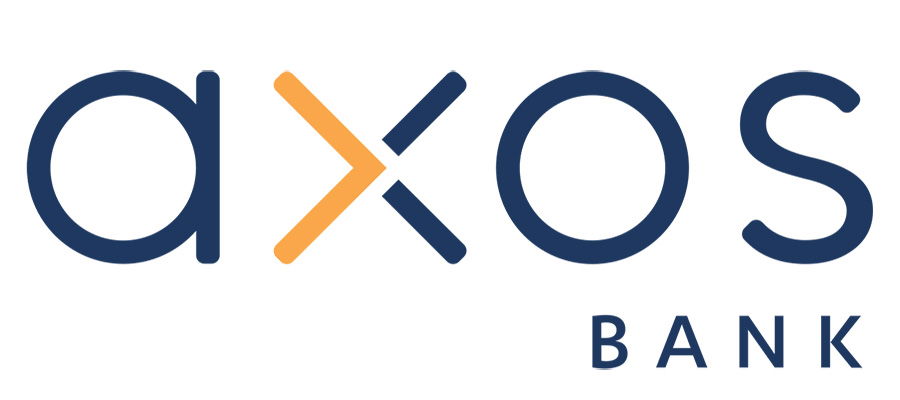Traditional savings accounts may seem like a safe place to park your money, but they come with one big drawback—low interest rates. With inflation rising, the money sitting in your account could be losing value rather than growing.
If you’re looking for better returns without sacrificing accessibility, there are plenty of alternatives that offer competitive interest rates, added flexibility, or even long-term investment potential. Some options keep your funds liquid, while others require committing for a set period to lock in a higher rate.
10 Alternatives to Savings Accounts
If you want better returns without locking your money away for years, there are plenty of options beyond a basic savings account. Some offer higher interest rates, while others provide more flexibility for spending and withdrawals.
Here are ten alternatives to traditional savings accounts to consider, depending on your financial goals.
1. Online Bank Savings Accounts
At one time, consumers were limited to a traditional bank or credit union for their savings needs. The interest rate offered was typically well below 1%, making investment accounts or CDs the only option.
But online banks have given traditional bank savings accounts a run for their money. With an online savings account, you can easily transfer money back and forth. You can find high-yield savings accounts with rates that help your savings grow. For example, SoFi offers up to 3.80% APY, Upgrade offers 4.02%, and there are several other online banks with rates close to 5% APY.
But even with a high-yield savings account, keep in mind that rates can fluctuate with the market. You won’t be able to lock in your APY, so if the interest rate drops, your monthly earnings will as well.
Pros:
- Some allow direct deposit
- Easily transfer funds to checking
Cons:
- Some have minimum balance requirements
- Depositing cash can be challenging
- Rate isn’t locked in
2. High-Yield Checking Accounts
Online banks aren’t just competitive in their savings rates. You can also find an online checking account with rates higher than those being offered by brick-and-mortar banks on savings.
While most traditional banks offer low interest on checking, if any, online-only banks offer high-yield checking accounts with rates as high as 5%. These checking options offer debit cards, ATM access, and the ability to have your paycheck direct deposited.
One downside to online checking is that cash access may be limited. Look for one with fee-free access to an ATM network and consider how you’ll deposit cash, if applicable.
Pros:
- Direct deposit available
- Relatively easy access to funds
- Debit card makes spending easy
Cons:
- Some have minimum balances
- ATM fees may apply
- Cash deposits can be limited
3. Certificates of Deposit (CDs)
Although savings account rates have increased in recent years, CDs have traditionally offered better returns. Currently, CD rates are similar to those you’ll find with online savings accounts and high-yield checking accounts, but there is one notable difference.
With a CD, you lock in a fixed interest rate for a period of six months to five years. That means if interest rates fluctuate, your earnings won’t change until the CD expires.
But that rate lock comes with a downside. You won’t be able to access the funds in your CD until your term is up. If you withdraw funds from it, you’ll pay early withdrawal penalties.
Pros:
- Interest rate locks in for the entire term
- Solid earnings without risk
Cons:
- Early withdrawal fees
- No access to funds
4. Higher-Yield Money Market Accounts
Another high-interest option is a money market account. Money market accounts bring the benefits of a checking account to a high-interest savings account. In other words, you’ll usually be given a debit card and can even make direct deposits to money market accounts, although you may face the same withdrawal limits you’d get with standard savings accounts.
The downside is that a money market account typically comes with tougher requirements. You may need to make a sizable opening deposit, for instance, or maintain a minimum daily balance.
Pros:
- Acts similarly to a checking account
- Comes with higher APY than traditional savings accounts
- May include a debit or ATM card
Cons:
- Same withdrawal limits as savings
- Opening deposit often required
- Minimum balance often required

5. Credit Unions
Credit unions famously limit themselves to an exclusive membership. It may be open only to members of a certain town or payrolled employees of a particular employer. In some cases, anyone can join a credit union as long as they pay a fee or join an organization with not-so-strict membership requirements.
This exclusivity means they focus heavily on perks. You’ll sometimes see much higher interest rates than you’d get at a brick-and-mortar bank. This is especially true of online credit unions that seek to compete with online banks and traditional credit unions.
Pros:
- Competitive rates on savings
- Exclusive perks available to members
Cons:
- Membership is usually open to exclusive groups
- With open credit unions, a fee may be required to join
- Rates aren’t always competitive with online savings APY
6. Cash Management Accounts
Banks aren’t the only ones offering interest-bearing savings options. With a cash management account, a financial service provider offers a place for you to park your cash in exchange for a higher interest rate than you’d get with a traditional savings account.
If you go with a cash management option, pay close attention to whether your funds are insured. Cash management accounts use FDIC insurance to protect your funds, but if you’ve invested some or all of the balance, the invested portion of the funds won’t be covered.
Pros:
- Funds can be linked to investment accounts
- Cash can be easily withdrawn
- Some cash management accounts come with debit and ATM cards
Cons:
- Invested funds may not be covered by insurance
- Limited number of withdrawals
7. Peer-to-Peer (P2P) Lending Services
If you have money parked in a savings account, you may be eyeing investing as a way to boost your earnings. But investing involves risk. With peer-to-peer lending, you’re loaning the money to someone with the promise of being paid back with interest.
But loaning money to strangers does come with risks. You’re essentially stepping into the role of lender, and borrowers default on loans all the time. However, interest rates can be higher with peer-to-peer lending than high-yield savings accounts, and some P2P lending platforms allow you to take on lower-risk borrowers in exchange for a reduction in rates.
Pros:
- Higher earning potential than other options
- Opportunity to help out borrowers
Cons:
- Funds aren’t insured by the Federal Deposit Insurance Corporation
- Riskier than other savings account alternatives
8. Treasury Bonds, Bills, and Notes
The U.S. Treasury Department regularly borrows money from taxpayers. The good news about this is that those taxpayers earn interest on the money the government borrows. There are three major types of investment products available from the Treasury Department.
The first type is U.S. savings bonds, also known as treasury bonds. These are available through the TreasuryDirect website. Two types of treasury bonds, Series EE and Series I, are also offered through some retirement plans. With a savings bond, you get the highest interest of the three, but you’ll need to leave the money alone for at least five years to avoid penalties.
If you’re looking for a shorter-term option, a treasury bill might be the way to go. A treasury bill matures in a year or less. Although treasury bills earn no interest, they’re sold at a discount. You get the full face value of the bill once the year is up.
A third and final option is a treasury note. Like treasury bonds, you’ll earn interest on T-notes, but T-notes are issued in $100 increments with three-, five-, seven-, and ten-year options. Unlike the two other options, though, T-notes are sold at auction, with buyers making a buy offer.
Treasury products are considered relatively risk-free, as they’re backed by the U.S. government. But there is a risk that interest rates will rise, and you’ll realize you could have earned more money elsewhere.
Pros:
- Risk-free way to earn interest
- Short- and long-term options available
Cons:
- Rates may not be as high as other savings account alternatives
- Most products require purchase through TreasuryDirect
9. Investing Options
Investing stands to bring you the biggest earnings on your money. But unlike savings accounts, it comes with varying levels of risk.
Corporate bonds, which are loans you issue to businesses, can bring higher yields than government bonds or savings accounts. While the risks aren’t quite as high as with stocks, if interest rates increase, the value of a corporate bond will dip. But the biggest risk with this investment type is that the business will default on the loan.
When you think of putting money into stocks, you no doubt think of the stock market, where risks are high, but rewards can be high as well. However, there are options that aren’t quite as risky. They are:
- Dividend-paying stocks: With this type of investment, you put money into a company that pays dividends to shareholders. This can be less risky because if you choose a large, stable company and monitor quarterly earnings reports, you can monitor that risk.
- Preferred securities: Typically issued by large banks and insurance companies, this type of investment offers higher yields with long maturity dates. They are also more vulnerable to market shifts, so they come with a higher risk than some investment vehicles.
Pros:
- Potential for higher rewards
- Can work well as a long-term savings strategy
Cons:
- Potential for big losses
- May need broker expertise to manage
10. Robo-Advisors
Robo-advisors have marked a revolution in the world of finance by democratizing investment advisory services. Traditionally, personal investment advice and portfolio management came with a high cost, usually requiring significant minimum investments and associated with advisory fees. Robo-advisors, with their automated algorithms, have changed this landscape.
Driven by complex algorithms and modern technology, robo-advisors analyze a user’s financial situation and objectives. They then craft a diversified investment strategy tailored to the user’s specific needs. Whether you’re saving for retirement, a large purchase, or building wealth, these platforms offer a streamlined approach.
One notable aspect of robo-advisors is their ease of use. After answering a series of questions about your financial goals and risk tolerance, the robo-advisor constructs a portfolio, typically composed of ETFs (exchange-traded funds) that align with your objectives. Over time, the robo-advisor will automatically rebalance your portfolio to ensure it remains in line with your specified strategy.
Pros:
- Automated investment management
- Typically, lower fees than traditional financial advisors
Cons:
- Limited human interaction may not suit everyone
- Investment performance depends on market conditions
Final Thoughts
The best savings alternative depends on your financial goals. If you need easy access to your money while earning competitive interest, a high-yield savings or checking account could be a great fit.
If you’re looking for a way to lock in a higher rate, CDs and Treasury bonds offer predictable returns. For those open to more risk in exchange for potential growth, investing in P2P lending, dividend stocks, or robo-advisors could be worth exploring.
No matter which route you take, the key is to choose an option that aligns with your short- and long-term financial plans. Take a moment to assess what matters most to you—liquidity, security, or higher returns—and start exploring the best alternative for your needs today.
Frequently Asked Questions
What is the best alternative to a savings account?
The “best” alternative depends on your individual financial goals and risk tolerance. For those seeking higher interest rates without too much risk, online savings or high-yield checking accounts might be suitable. For those open to more risk for potentially higher returns, investment options like stocks or peer-to-peer lending platforms might be more fitting.
Is my money safe in online banks and high-yield checking accounts?
Yes, as long as the online bank or institution is FDIC-insured, your funds are protected up to $250,000 per depositor, per institution.
What is the safest alternative to a savings account?
Treasury bonds and CDs are among the safest options since they provide guaranteed returns. If insured by the FDIC or NCUA, online savings accounts and money market accounts are also secure.
Which alternative is best for emergency savings?
High-yield savings accounts and money market accounts are ideal for emergency savings because they provide liquidity and stable returns. Avoid options with penalties for early withdrawals, such as CDs.
Can I lose money with these savings alternatives?
Some options, like high-yield savings accounts, CDs, and Treasury bonds, are low-risk. However, investments such as stocks, P2P lending, and corporate bonds carry the risk of losing value depending on market conditions.
What’s the difference between a money market account and a high-yield savings account?
Both offer competitive interest rates, but money market accounts often include check-writing and debit card access, while high-yield savings accounts may have withdrawal limits.
Can I withdraw money anytime from these alternatives?
It depends on the option. High-yield savings accounts and money market accounts allow easy access, while CDs and Treasury bonds require holding funds for a set period. Investments may have restrictions or risks when withdrawing funds.
Which alternative offers the highest potential returns?
Investments such as dividend-paying stocks, P2P lending, and corporate bonds typically offer the highest returns but come with varying levels of risk.




